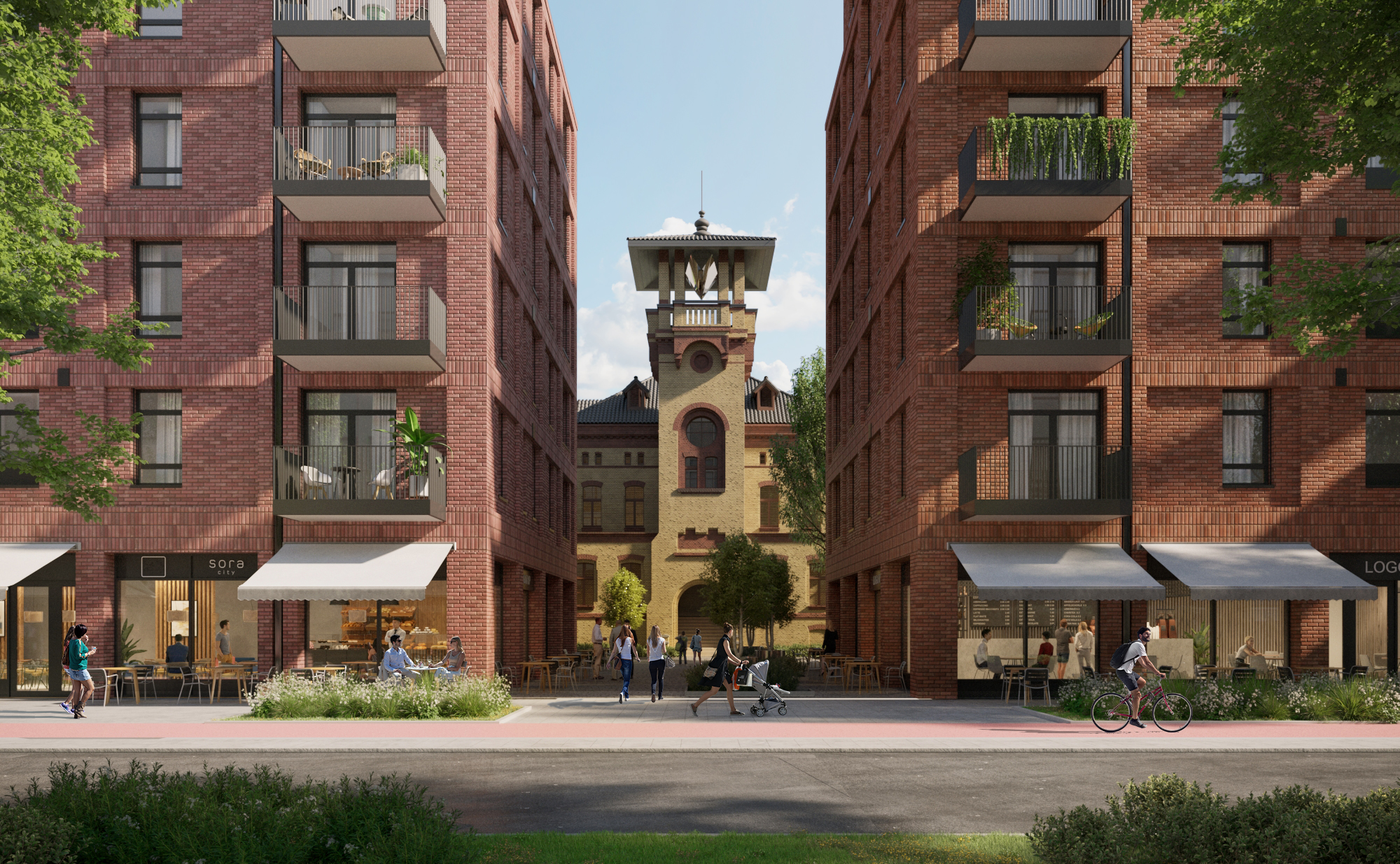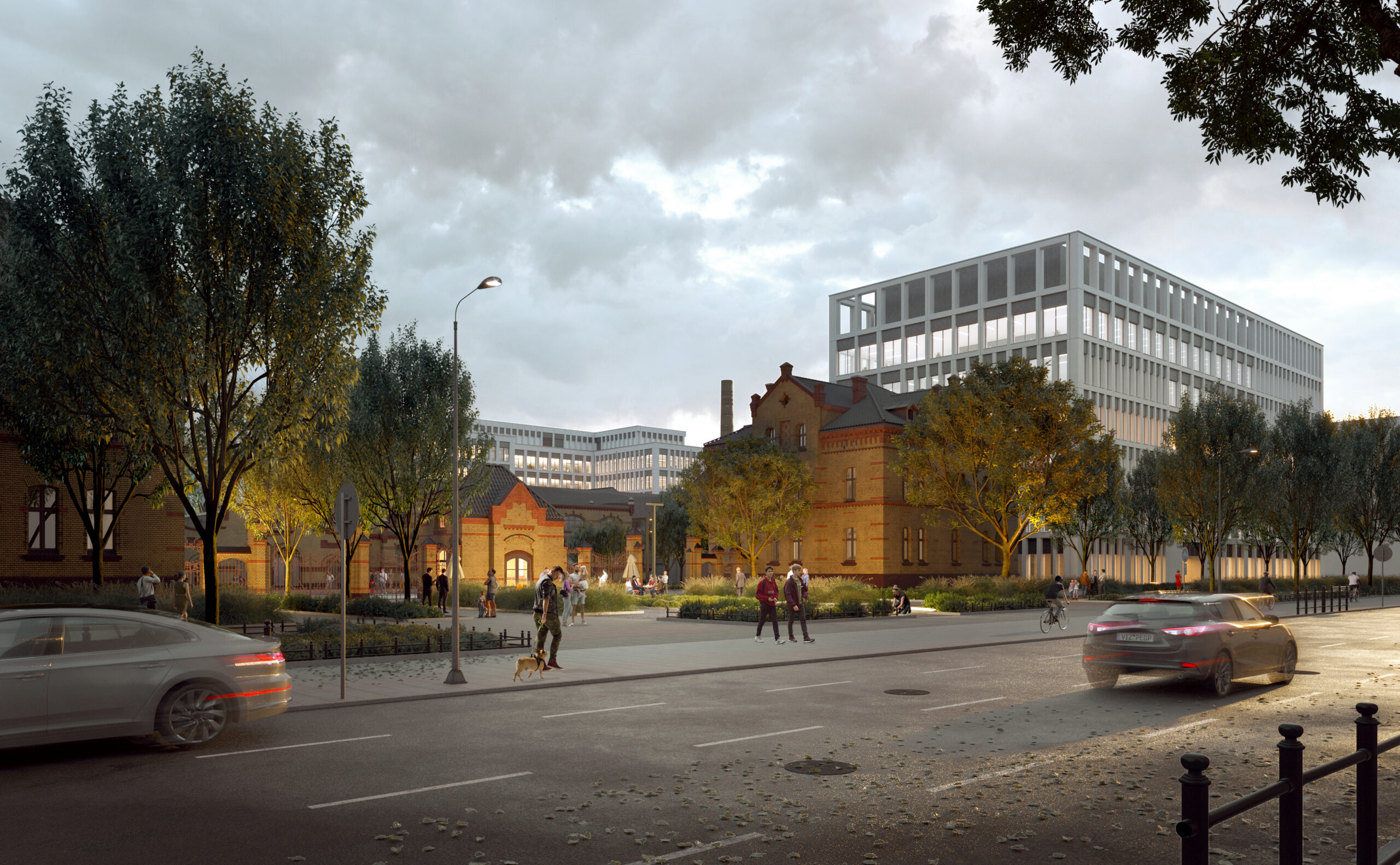Project
In the place of the former meat processing plant we are building an entirely new quarter of an old district of Poznan. The urban concept assumes the combination of modern architectural solutions with the historical context of the place. On the premises of the property there are buildings that date back to the turn of the 19th and 20th century, e.g. the main hall, boiler room, engine room, water tower, some of which after revitalization will constitute an attractive, central part of the new project.
By combining contemporary architectural solutions with the historical context of the site, we will provide the Poznań community with comfortable apartments and work spaces — in offices, shops, and restaurants. We will invite the world of culture and art to Stara Rzeznia by offering a new space for dialogue and creativity. With the greater Poznań community in mind, we are creating plazas and squares, so that Stara Rzeznia will be filled with the bustle and laughter of passers-by, friends, and entire families from morning to evening.
Architecture
It is the central square that remains the heart of Stara Rzeznia. It will be surrounded by the original historical buildings designed and built by Felix Moritz in 1900, which will be preserved in their entirety. Among the carefully restored post-industrial historic facilities, there will be modern residential buildings, offices, and commercial/service premises with a unique perspective of human scale and great look.

In terms of the architectural design and the materials used, the new development will fit not only in the context of post-industrial architecture, but also in the existing neighbourhood of residential buildings along Grochowe Laki Street.
The new buildings have been designed so that the so-called viewing openings ensure ample exposure of the historic buildings, especially the buildings of the Hill of St. Wojciech as well as the nearby green enclave of the Citadel. The architects reduced the volume of the top floors of the new buildings to ensure an appropriate relationship between their height and existing city development.
The front of Stara Rzeznia along Garbary Street will be arranged in a manner reminiscent of its original condition in 1900: attractive flower beds will be planted there, inviting passers-by to visit this unusual place.
Green solutions
The entire area will be developed in the spirit of sustainable construction and will be presented for LEED Neighborhood (Leadership in Energy and Environmental Design – Neighborhood Development) and WELL Community systems certifications.
LEED is an international building certification system in terms of the ‘smart growth’, harmony of urban development with the needs of residents and green construction. LEED certification confirms that the investment has been designed and built using technologies that optimize, among others, energy and water consumption, as well as reduced CO2 emissions. The WELL Community Standard, on the other hand, aims to check the impact of not only buildings, but also public spaces, on residents. Certification supports a pro-health approach and well-being in all aspects and areas of community life.
Due to the ecological nature of Stara Rzeznia project and the expectations of the residents of Poznan, as much as 20% of the total area of the complex will be arranged as green areas. This will be achieved by introducing urban greenery, which is a composition of flower beds, lawns, planting bushes and trees as well as arranging green roofs. In addition, parking spaces for bicycles, both in the form of a bicycle room next to residential buildings, as well as public parking lots for cyclists at each of the buildings have been prioritized.
Location
Stara Rzeznia is located within the Old Town district. In the immediate vicinity of the complex, on the west side, lies the historic district of Saint Wojciech with its architectural gem — the 15th-century Gothic-Renaissance church, which at the beginning of the 20th century was decorated with Art Nouveau polychromes and stained glass designed by Stanislaw Wyspianski and Józef Mehoffer.

Adjacent to the church is the oldest wooden monument in Poznań, a shingle-covered bell tower built at the turn of the 17th century. Also next to the church is the Poznań Skalka storing the ashes of, among others, Józef Wybicki, the creator of the Polish national anthem, the heart of General Jan Henryk Dabrowski, and an urn with soil from the burial place of General Ignacy Pradzynski, a citizen of Wielkopolska and commander-in-chief of the November Uprising.
Stara Rzeznia is only a ten-minute walk from Cytadel, a well-kept park of approximately 100 hectares. Many walkers are attracted there by the installation “Unrecognized” by the famous sculptor associated with Poznan Magdalena Abakanowicz (1930–2017), among other features.
While close to the oldest monuments in Poznań, today the district is surrounded by green recreational areas. At the same time, the front of the site on the eastern side adjoins one of the key thoroughfares of the Old Town, Garbary Street, which is lined with representative tenement houses from the 19th century, guaranteeing excellent connections between the district and all major institutions in the city.